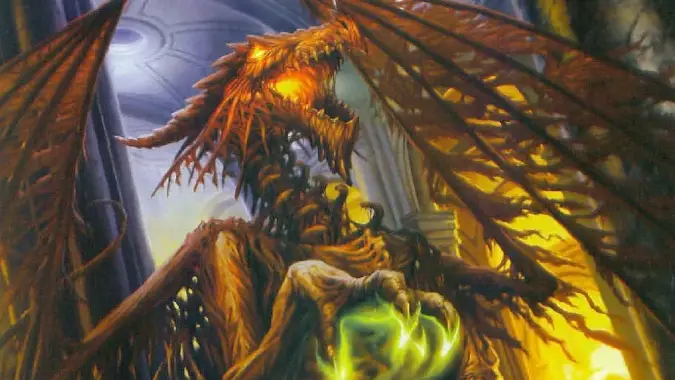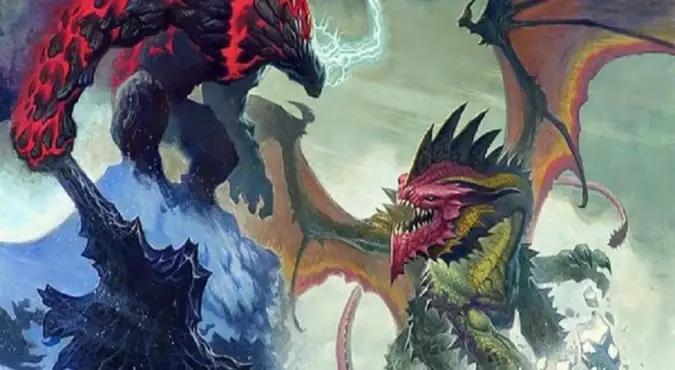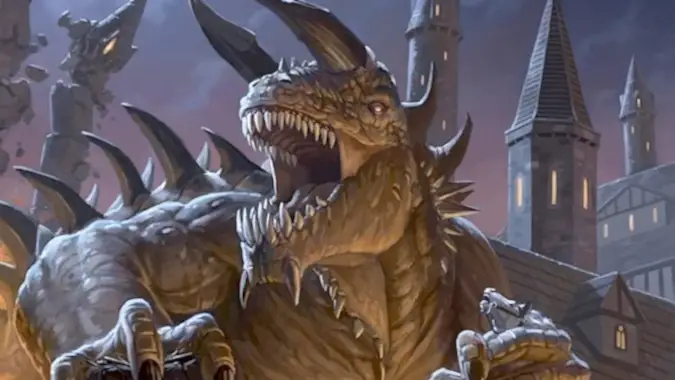How to handle the power overwhelming of high level D&D games

Most Dungeons and Dragons campaigns, especially in fifth edition, end around level 10. People have scheduling issues, circumstances change — it can be hard to get your character all that way up. Heck, even the folks at Critical Role, who play very regularly on an established schedule over the course of several years, didn’t get past level 15 during Campaign 2. Playing a character to cap is simply not something that happens very often.
Furthermore, a lot of D&D players will tell you that the game is best balanced for levels 5 to 10 anyway, and that as you get higher in level, things become extremely difficult to keep on an even keel. Running a mystery can be pretty hard when your players can ask their gods for divine help, obstacles you put in your party’s way are easily traversed by teleportation, polymorphing, straight up flying, and so forth. A high level Fighter can attack a lot, while a high level Barbarian can absorb enormous amounts of punishment and their critical hits are terrifying, and you don’t want to know just how much damage a smiting Paladin can churn out at those same levels.
And that’s not even covering the kind of mayhem high level Wizards and Sorcerers and Clerics and Druids can unleash, much less how a high level Bard can do almost anything. And the Warlock class? I mean, so many different ways they can be nightmares once they start getting up there in levels.

Shake the pillars of heaven with a big bad or two (or more)
But at the same time, as someone who has deliberately run games with PCs at levels 15 through 20 — whether it be one shots or deliberate campaigns that started at higher level on purpose — I can say with confidence that it can crazy fun to play at these levels. The issue of balance at high level is as much one of expectation as it is of power creep — D&D 5e is a very different game for your level 1 Sorcerer than it is for your 15 Sorcerer/5 Paladin. Here’s some advice about how to play the game with characters who are approaching the point of becoming mythical heroes or figures legends get written about.
First up, don’t be afraid to let things get big. Your party has access to powers and magical spells that can do amazing things — raw damage spells like Meteor Swarm or Disintegrate, plus spells like Fireball or Lightning Bolt that can be upscaled and do significantly more damage. They can also summon powerful demons, or angels, or fey creatures, likely change their own shape or the shape of their enemies with powerful Polymorph magic. Your high level Barbarian can deal a lot of raw damage, especially depending on their subclass. And all of this is fine! It’s what you’re there for, to let the players actually use all of that power they’ve accumulated over the campaign (or, if it’s a one shot, the power you handed them in the first place) to do stuff that would be at home in a fantasy anime. Let them fight massive dragons, enormous abominable creatures from sunken islands, even gods.
Don’t be afraid to let them get around obstacles with their various spells and powers. Embrace it. Let them find the bastion of the Blasphemy in Onyx, the undead Ancient Black Dracolich with an army of horrific, powerful minions and storm the place, tearing through hordes of lesser minions and hitting a series of powerful minibosses along the way, chosen minions of the Blasphemy. It’s absolutely okay. And don’t be afraid to design truly powerful and terrifying entities to fight them — monsters like the Tarrasque, or the Astral Dreadnaught, or Ancient Dragons are extremely powerful and a party of characters at 20th level are absolutely fair game. Heck, have an Ancient Red Dragon summon a Tarrasque for double the fun!
Some tips for how to handle combat at this scale:
- Familiarize yourself with the capacities of the creatures you put in front of the players. You need to know what they can do. Don’t just try and yank a monster out of the Monster Manual with a few minutes prep time.
- Be tactical and use the creature to its fullest. A Dragon is smart and it can fly — it’s not going to stay on the ground and let people attack it if it can get away. While it might be galled to be defeated by mortals it’s not going to stay and fight to the death unless it has no choice.
- Use every legendary ability and lair action available to you. If your party is fighting the Blasphemy in Onyx inside its Umbral Lair, don’t forget that it can summon their own shadows to attack them!

You can finally take the kid gloves off
Remember, too, that when your party is high level, it’s fair game to have them opposed by equally powerful beings who can in some fashion use their own tricks against them. If they love to Scry, have the Dark Druids use Commune spells to learn the party’s intentions. A Beholder Tyrant can use its Anti-Magic to really mess up your casters, who suddenly can’t cast that Disintegrate spell. That Tarrasque I mentioned? Eldritch Blast is a spell that requires an attack roll, and that means it’s completely useless against ol’ Tarry. Your Warlock will hate every second of fighting that thing. Also, remember things like lair actions, legendary actions, and so on — monsters are designed differently than characters, they often have complications and abilities that make the combat harder on purpose because the party may well outnumber them pretty significantly. That Ancient Red Dragon has spent a lot of time preparing its lair for exactly this kind of fight, after all.
Finally, you can also really complicate the lives of characters at these levels. Once you’re 15th level or higher, you’re someone of note — you’ve achieved a level of power most people never dream of, and the rulers of nations and heads of powerful organizations likely have heard of you at the least unless you’ve taken extreme pains to avoid the spotlight. When powerful threats rise, desperate Kings and Empresses may well turn to the party for help. The cult of a banished deity that seeks to return and destroy all existence might well target the players, both as potential sacrifices and as obstacles should their god return. And then there’s personal issues — threats and problems that can’t be easily dealt with using brute force. The party finds out that their own actions have accidentally allowed a malevolent force to overwhelm their original homeland, or just has to deal with their own successors who want to get out and explore the world for themselves, just like they did when they were starting out.
I think a lot of DMs are intimidated by high level play, and that’s a shame, because in some ways it’s when the game gets the most fun — it’s when you can cut loose and almost be a protagonist from a video game destroying waves of foes and smashing the most powerful of threats. Getting to use all of those spells and abilities can be pretty amazing. Watching the campaign endings for both Critical Role campaigns, we got to see some crazy magic use, clutch strategic play, and some amazing use of abilities like Counterspell. Don’t be afraid to let your players experience that kind of D&D.
Please consider supporting our Patreon!
Join the Discussion
Blizzard Watch is a safe space for all readers. By leaving comments on this site you agree to follow our commenting and community guidelines.
 @MatthewWRossi
@MatthewWRossi



